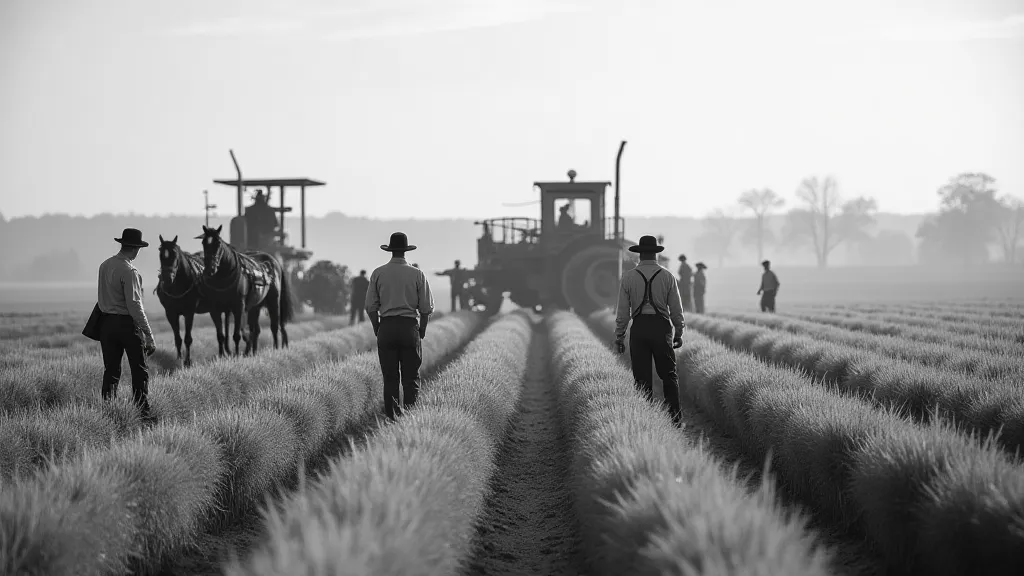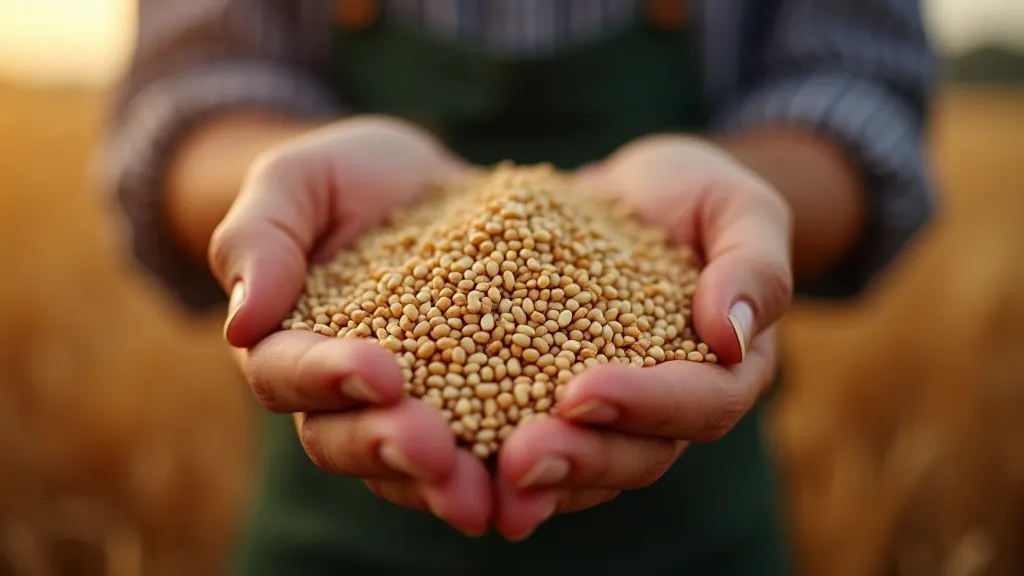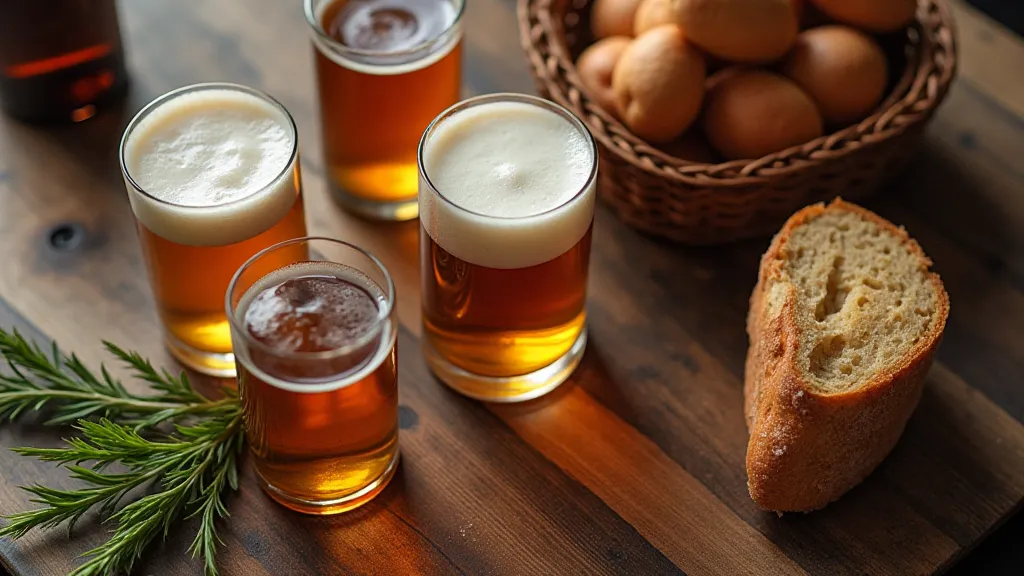Grainscapes: The Agricultural Tapestry Woven into Local Brews
The clatter of an accordion, a melancholic, rambling melody, drifts through my mind whenever I think about local breweries. It’s a sound of heritage, of fields ripe with harvest, of traditions passed down through generations. Much like an antique accordion, painstakingly restored to breathe life back into its aged bellows, the story of local brewing is intertwined with the agricultural landscape – a tapestry woven with the threads of soil, seed, and skilled hands.
We often celebrate the final product – the satisfying hiss of a freshly poured pint, the complex aroma filling our senses – but the true story begins long before the fermentation tanks. It starts in the fields, with the grain, the hops, the fruits that define the unique character of a region’s beers. These aren't just ingredients; they're echoes of the past, reminders of the farmers who nurtured the land and the brewers who transformed their bounty into liquid artistry.

The Roots of Regional Brewing: A Historical Perspective
The history of local breweries isn’t a linear progression; it’s a cyclical pattern of boom, bust, and resurgence. Before the industrial revolution, virtually all beer was locally produced. Communities relied on nearby farms for the necessary ingredients, and brewing was a vital part of the local economy. Farmers weren't just providing food; they were also supplying the breweries, creating a symbiotic relationship that sustained both. This meant the beer itself was profoundly reflective of the local terroir – the taste of the soil, the climate, the very essence of the region.
Think about the Bavarian Reinheitsgebot, the German Beer Purity Law of 1516. While its primary intent was to regulate what could be used in brewing (water, barley, hops, yeast), it inadvertently solidified a commitment to regional ingredients. The beer produced within a specific area bore the unmistakable mark of that locality. The same principle applied, albeit often less formally, across Europe and beyond. Beer wasn't mass-produced; it was a community product.
The 19th and 20th centuries brought industrialization, and with it, the rise of large-scale breweries. These behemoths, prioritizing efficiency and cost-cutting, often sourced ingredients from wherever they could be obtained cheapest, diluting the connection to local agriculture. Many smaller, regional breweries disappeared, victims of aggressive marketing and economies of scale. It was a period of homogenization, where regional beer identities began to fade.
The Craft Beer Renaissance and the Return to Terroir
But the story doesn't end there. The late 20th century witnessed the resurgence of craft brewing, driven by a desire for authenticity, flavor complexity, and a renewed appreciation for local ingredients. This wasn't just about rejecting the blandness of mass-produced beer; it was about rediscovering the lost connection to the land.
Modern craft breweries are increasingly partnering with local farmers, sourcing grains, hops, fruits, and even honey. This collaborative approach not only supports local agriculture but also allows brewers to experiment with unique flavor profiles that reflect the character of the region. A brewery in Vermont might feature a maple-infused ale, showcasing the state’s renowned maple syrup industry. A brewery in the Pacific Northwest might incorporate locally grown berries into a tart and refreshing wheat beer. The possibilities are as endless as the ingenuity of the brewers and the diversity of the agricultural landscape.
It’s a conscious effort to tell a story—a story not just of brewing, but of the people who cultivate the land and the communities that thrive on its bounty. This isn't merely about marketing; it’s about honoring a tradition and forging a sustainable future.
The Craftsmanship Connection: From Field to Glass
The parallels between restoring an antique accordion and brewing exceptional beer are striking. Both require a deep understanding of materials, a reverence for tradition, and an unwavering commitment to craftsmanship. Just as an accordion’s tone is shaped by the wood used, the reed configuration, and the skill of the maker, a beer's flavor is intimately linked to the quality of its ingredients and the brewer’s expertise.
Restoring an accordion involves meticulously cleaning and repairing the wood, painstakingly testing and adjusting the reeds, and ensuring that every component functions in harmony. Similarly, a brewer must understand the nuances of malting, the delicate balance of fermentation, and the subtleties of aging. It's a process that demands patience, precision, and a willingness to learn from both successes and failures.

Consider the role of hops. Historically, hops weren't just about bitterness; they contributed complex aromas and flavors that reflected the specific variety and the region where they were grown. Modern craft breweries are reviving heirloom hop varieties, partnering with farmers who specialize in cultivating these unique strains, and exploring new and exciting ways to incorporate them into their beers. This is more than just brewing; it's about preserving agricultural heritage.
More Than a Pint: A Toast to Local Roots
The next time you raise a pint of local beer, take a moment to appreciate the story it tells – a story of fields, farmers, and skilled hands. Consider the journey those ingredients took, from the soil to the glass. It’s a reminder that great beer is more than just a beverage; it's a connection to our agricultural heritage, a celebration of local communities, and a testament to the enduring power of craftsmanship.
Like the comforting, slightly melancholic melody of an antique accordion, local beers evoke a sense of place and time, reminding us of the richness and complexity of the world around us. They're a liquid embodiment of the landscape, a delicious and satisfying echo of the past, and a hopeful promise for the future.


![The Copper Constellation: Mapping the Lost Breweries of [Region Name]](/thumbs/the-copper-constellation.webp)



